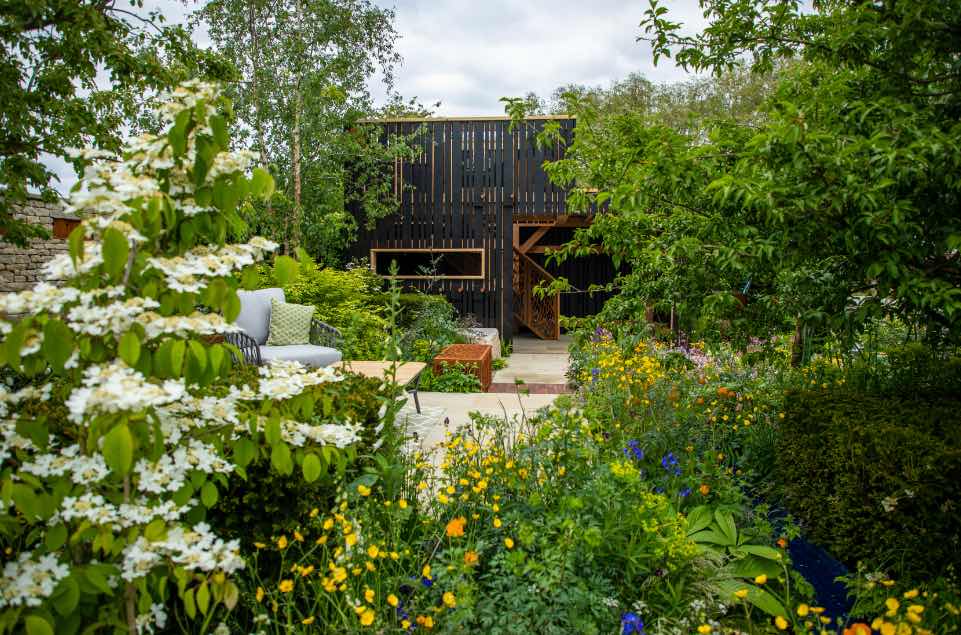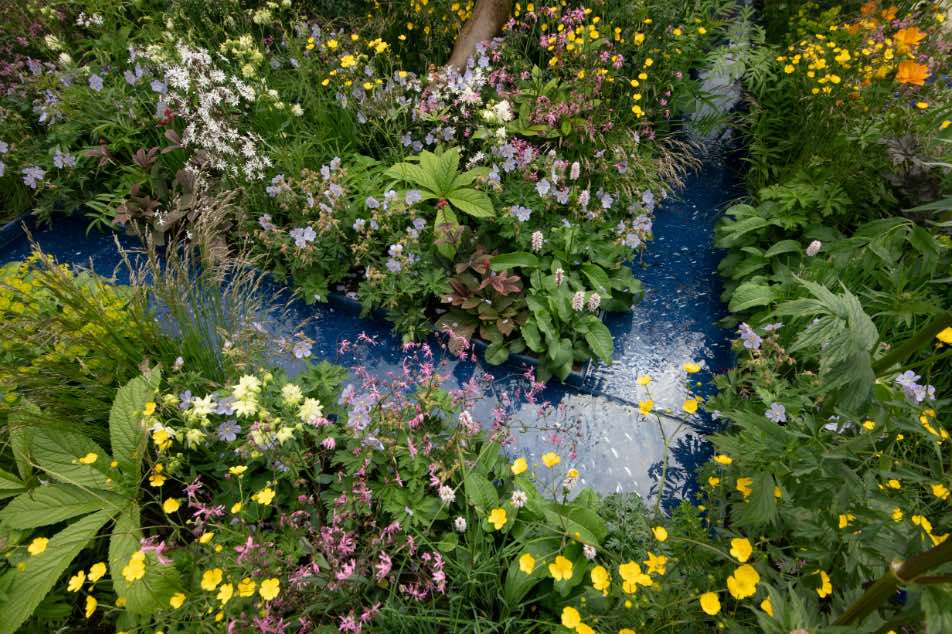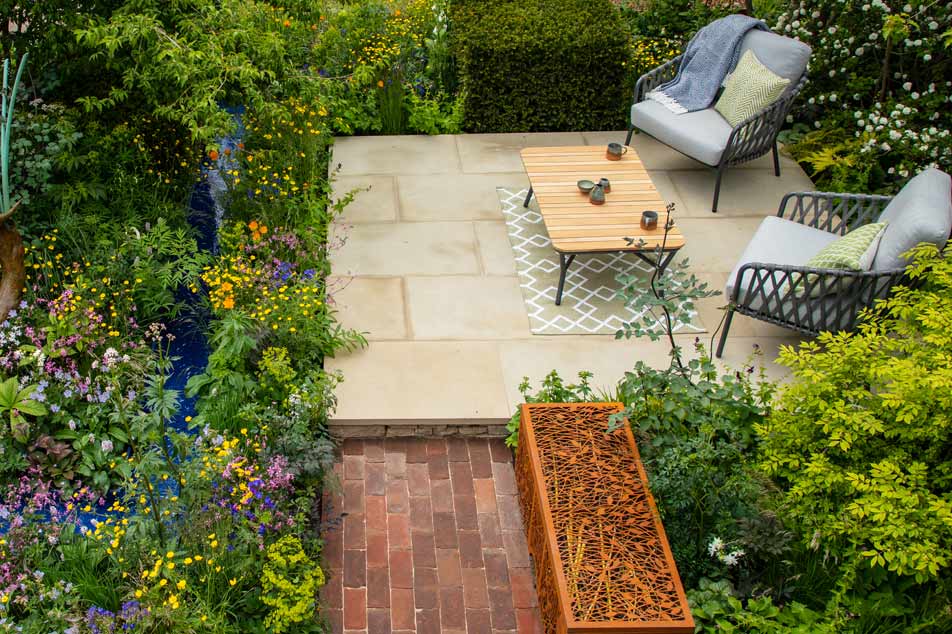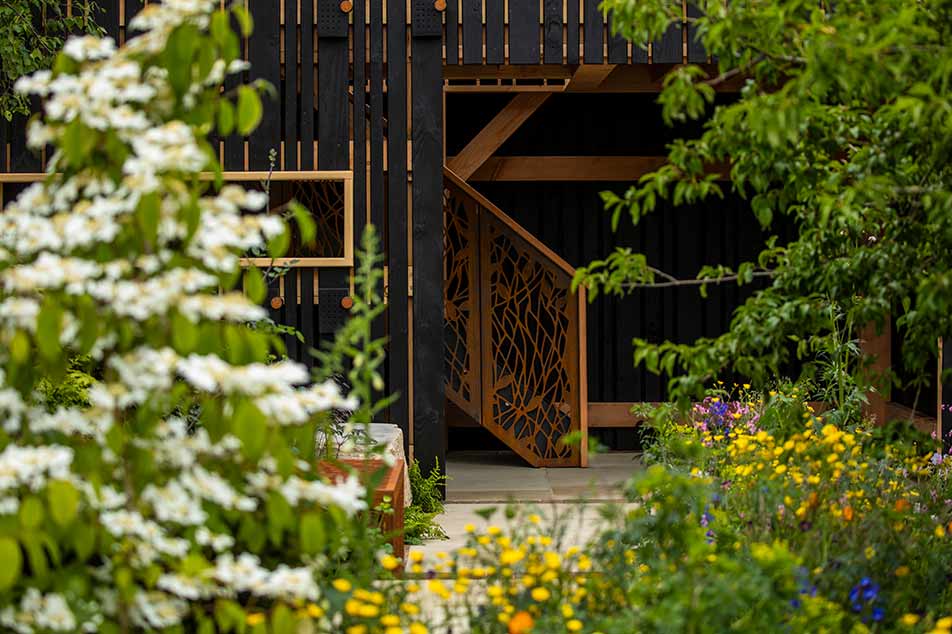The RSPCA created a wildlife garden at the 2023 Chelsea Flower Show, picking up a prestigious silver-gilt medal from the judging panel, as it spreads an inspiring message about reversing wildlife decline. The garden, designed by Martyn Wilson is a modern interpretation of a wildlife sanctuary, filled with ideas for wildlife lovers across the country to recreate at home, whatever space you have available. Here are a few takeaway lessons from the RSPCA garden.
The garden has been a draw for stars and celebrity gardeners alike. TV presenter and RSPCA vice president Steve Backshall visited the garden yesterday and said we owe it to future generations to take action now. He fears for some of our much-loved British wildlife without urgent action to save them.

Wildlife gardens can contemporary and stylish
The stylish RSPCA RHS Chelsea Flower Show sanctuary garden shows that wildlife gardens don’t have to look unkempt or overgrown. Award-winning designer Martyn Wilson has created the wildlife garden design to show that a wildlife garden can look contemporary, stylish and well-kept, showcasing high-end art and design, while still providing sanctuary to a wide range of species. All the features in the garden use natural, sustainable or recycled materials, and show how we can have a positive impact on biodiversity.

Include a drinking water source for wildlife
A central water feature formed from a 9m long rill made of recycled plastic waste is a reference to the RSPCA rescuing almost 4,000 animals trapped in or injured by litter last year (2022). Providing movement, sound and a drink for wildlife, it symbolises the rescue-rehabilitate-release cycle of care given to thousands of animals at the charity’s four specialist wildlife centres. A rain catcher chain in beautiful rusty tones captures rainwater from the hide too. The water feature is designed by Stark and Greensmith. The RSPCA was called to help almost 1,000 wild marine animals last year. Including a drinking water source is key to help support birdlife.

Choose native trees and shrubs for birdlife
Native trees and shrubs that are vital for birds and wildlife can be seen in the RSPCA Chelsea garden. Planting is in a multi-layered naturalistic style in shades of green, whites and tones of blue with more than 2,200 pollinator-friendly plants. Last year the RSPCA was called to help more than 72,000 wild birds – almost 200 every single day.

Add a bee and bug hotel
A raised wildlife-watching ‘hide’ made from UK-grown Douglas fir and larch gives stunning views across RHS Chelsea Flower Show and the Royal Hospital Chelsea. This is one of the largest structures at this year’s show. The hide features a green roof and wall-mounted bee hotels designed to be a refuge in nature for an RSPCA volunteer after a busy shift. Volunteers are critical for helping the RSPCA continue its vital work but also in order to have an impact in the wider community. The RSPCA is hoping the Chelsea Flower Show project inspires people to carry out small acts of kindness for wildlife they share their neighbourhoods with, as part of their Wildlife Friends scheme.
Gardeners are the secret weapon against wildlife decline
The UK is one of the most nature-depleted countries in the world with more than one in seven native species facing extinction and more than 40% in decline. The RSPCA’s garden at the Chelsea Flower Show aims to inspire you to create your own wildlife-sanctuary at home; so that together we can help more wild animals thrive. Find out more on the RSPCA’s website
The RSPCA wildlife garden at Chelsea Flower Show was generously funded by Project Giving Back and marks the start of their 200th-anniversary celebrations in 2024.




